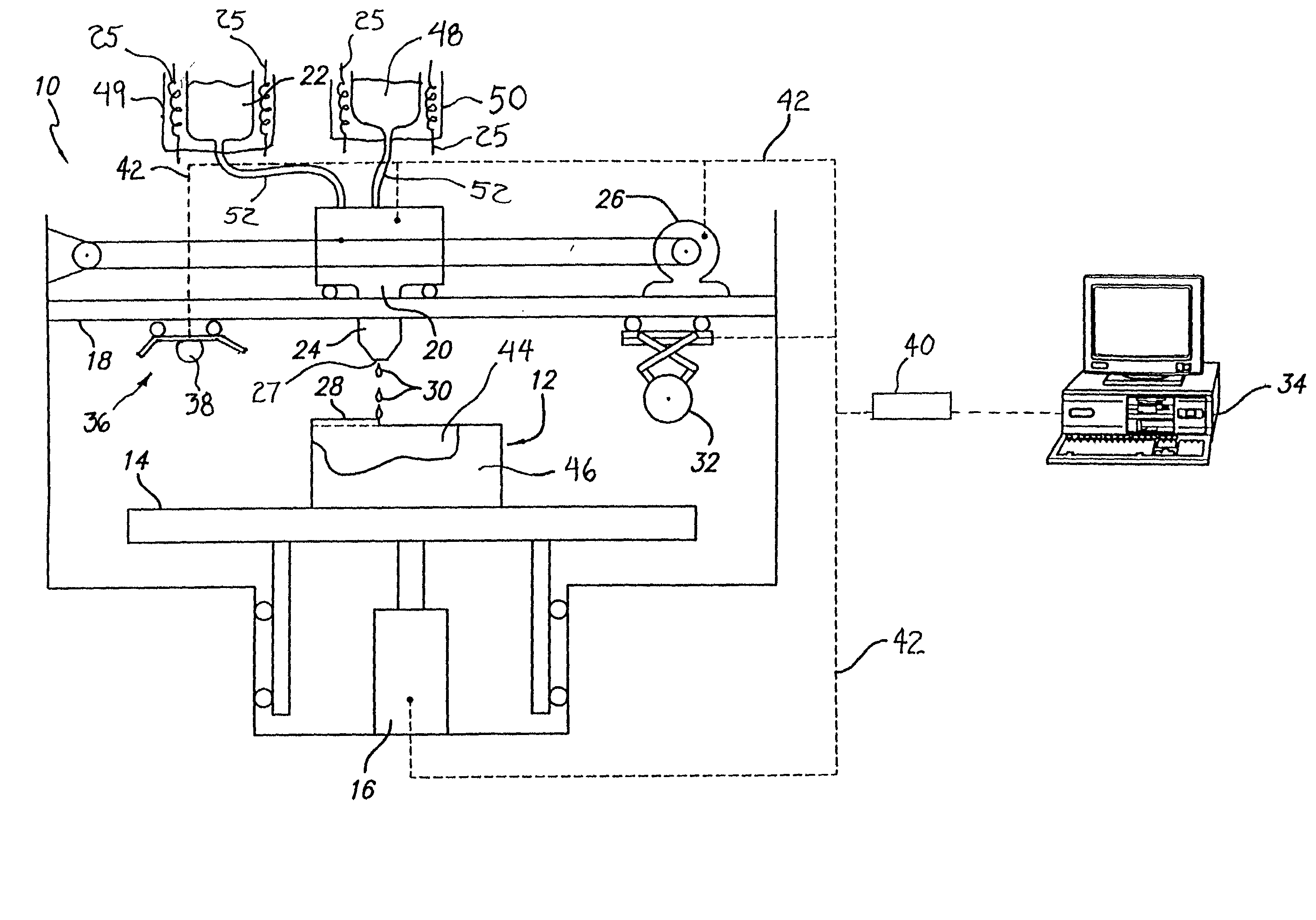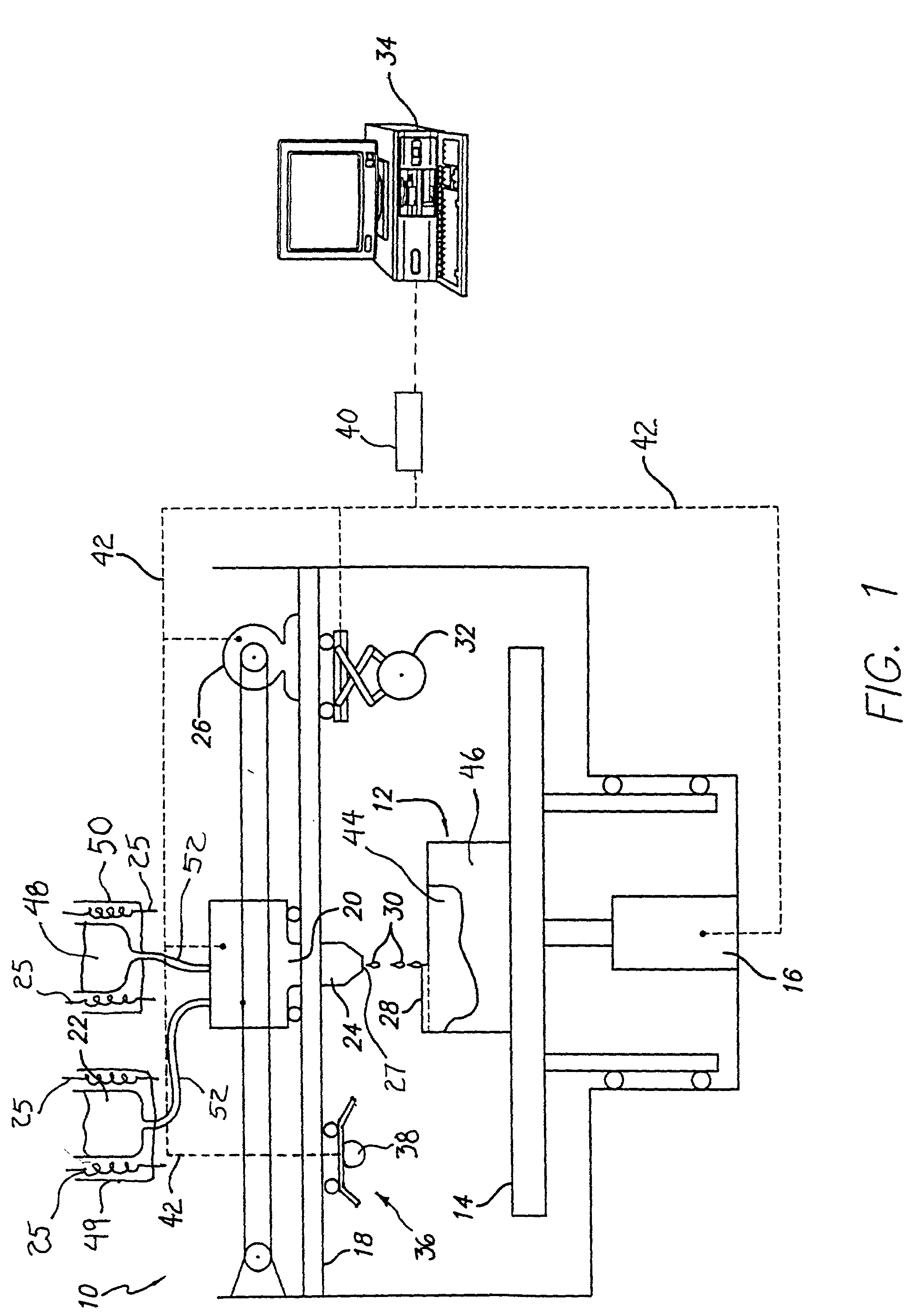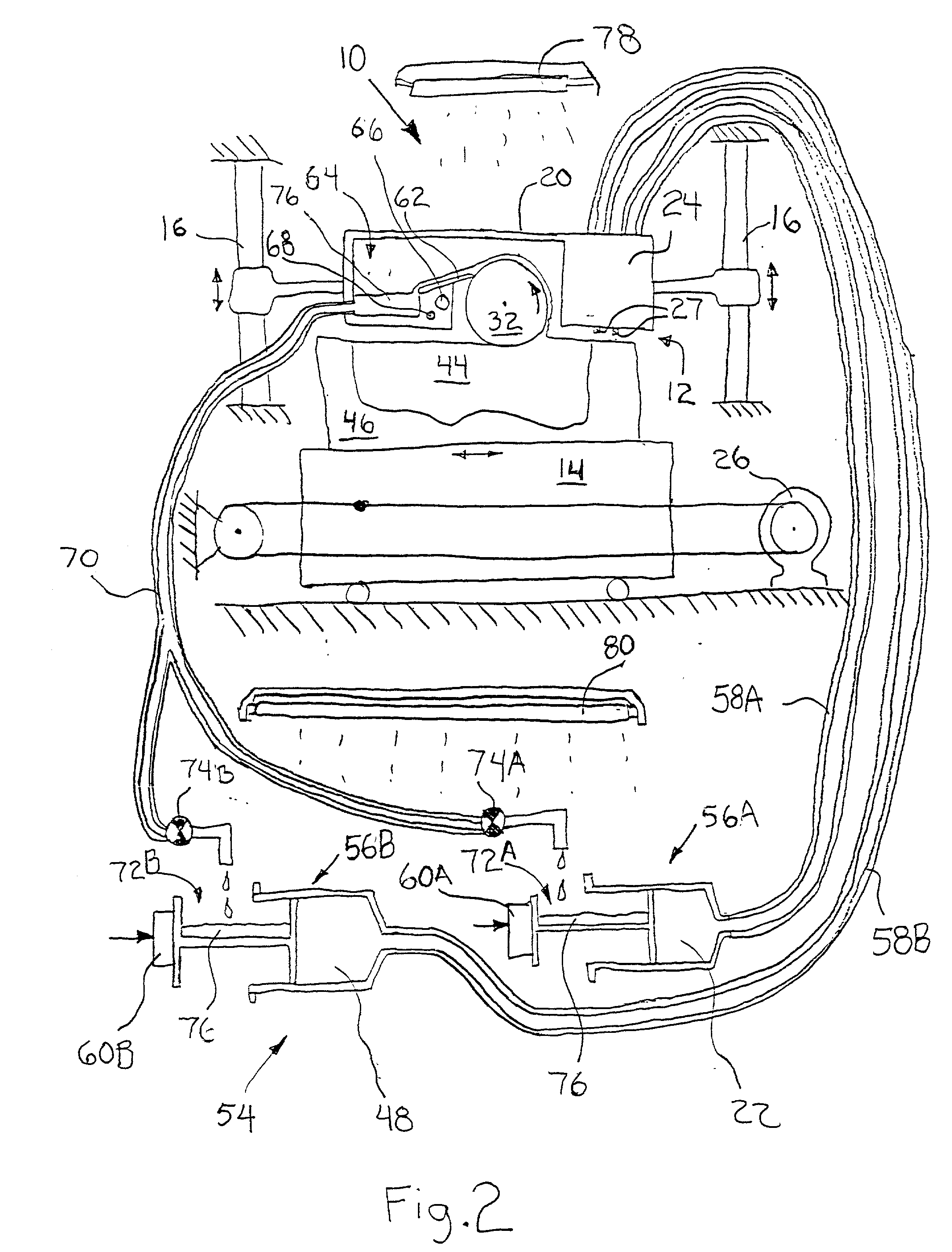For instance, SFF technologies dramatically shorten the time to develop prototype parts and can produce limited numbers of parts in
rapid manufacturing processes.
This is generally due to the use of relatively low cost dispensing devices employed in SDM systems such as ink jet print heads, instead of the expensive lasers and scanning components used in
stereolithography systems.
One
disadvantage is that the three-dimensional objects formed from conventional
thermoplastic materials by SDM exhibit inferior mechanical properties compared to objects formed by stereolithography.
Since
wax has very little tensile strength, the high
wax content significantly reduces the mechanical properties of the
resultant objects formed.
For example, at somewhat elevated temperatures the objects start to become tacky or sticky, which is undesirable.
However no UV curable formulations are disclosed.
However, there is no discussion of these formulations in the specification.
However, there is no mention whether the formulations were successfully dispensed.
However,
thermal stability becomes a significant problem for curable phase change materials held these elevated dispensing temperatures for extended periods of time.
This is undesirable as thermal
initiation of the cure process can clog the dispensing orifices of the print head and cause the apparatus to malfunction.
However, this still does not eliminate cross-linking, which can still occur in the ink jet print head and undesirably cause the print head to malfunction.
Further, cross-linking may also occur in the holding container that can degrade the material to the point where it can no longer be properly dispensed.
However these components increase the
viscosity of the formulated material in the flowable state, and often this increase is well beyond the
viscosity range capability of the print head.
However, this approach does not work for UV curable materials because the high dispensing temperatures can initiate the cure process, which can increase the viscosity of the material and undesirably effect dispensing.
Adding low molecular weight monomers to lower the viscosity of the formulation can help; however,
odor problems can arise, as these monomers tend to evaporate and condense within the
machine causing
contamination that can cause the
machine to malfunction.
The cross-linking problem is further complicated since the trend in the ink jet printing industry is to achieve higher printing resolution by decreasing the size of the orifices in the print head.
As the viscosity values required for ink jet print heads continue to decrease, formulating phase change materials to meet these requirements becomes exceedingly difficult, particularly for radiation curable phase change materials.
However, it is unknown whether these materials are phase change materials that solidify upon being dispensed.
Further, in neither of these references is the problem of cross-linking and
thermal stability mentioned, nor is there disclosure of the material formulations, viscosity values, or dispensing temperature.
It is to be appreciated that as a general matter the material can easily transition between the flowable and non-flowable state prior to being cured, however, once cured, the material cannot transition back to a flowable state and be dispensed by the apparatus.
Even if the SDM apparatus were operated continuously to dispense the material, the dispensing orifices at the proximal and distal ends of the print head may clog, as they often remain idle for substantial periods of time.
If this occurred, the build process will fail as the next layer of dispensed material will not solidify, but rather remain in the flowable state and run off the object.
It would be undesirable if the viscosity of the material in the apparatus increased beyond about 20% of its intended value.
If this occurs, the print head could clog making the apparatus inoperable, or the material would not dispense properly causing the build process to fail.
Ideally no increase in viscosity is desired, however this is generally not possible when working with radiation curable phase change materials.
Formulations that exhibited a substantially sharp increase in viscosity indicated that the cure process was strongly triggered by thermal
initiation, rendering formulation unacceptable.
Formulations whose viscosity increased beyond this value very quickly, such as within hours, were considered unacceptable.
Generally, all of the formulations held at 95.degree. C. had an unacceptable dispensing life of less than about 3 days.
Damage to the piezo elements in the Z850 print head start to occur at temperatures below about 60.degree. C.
In addition, the support material may exhibit mechanically weak properties in which it can be easily crumbled away from the three-dimensional object.
 Login to View More
Login to View More 


